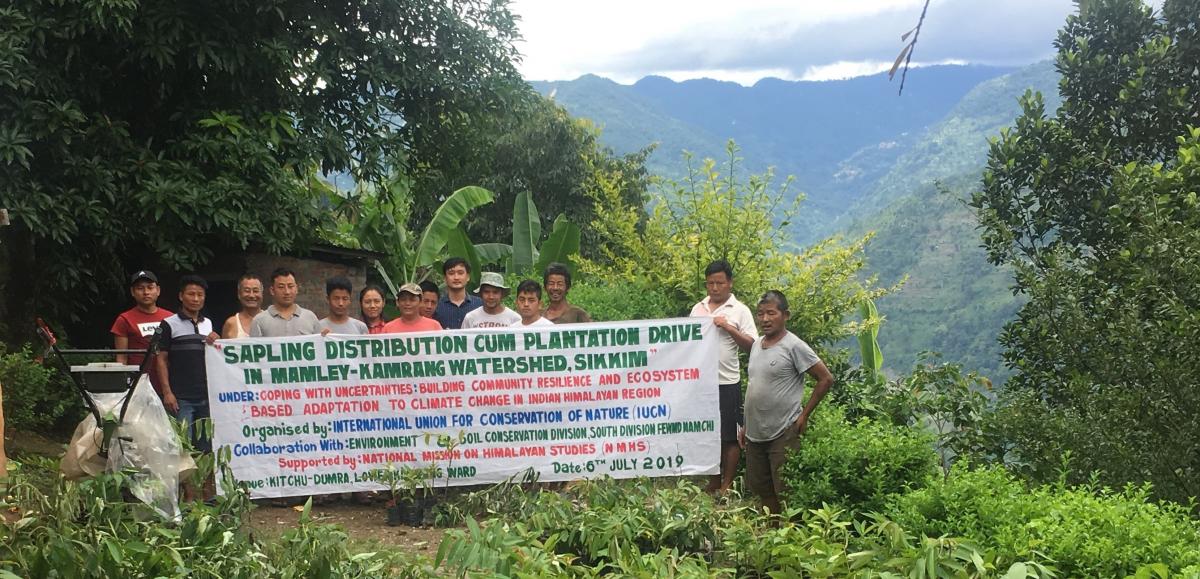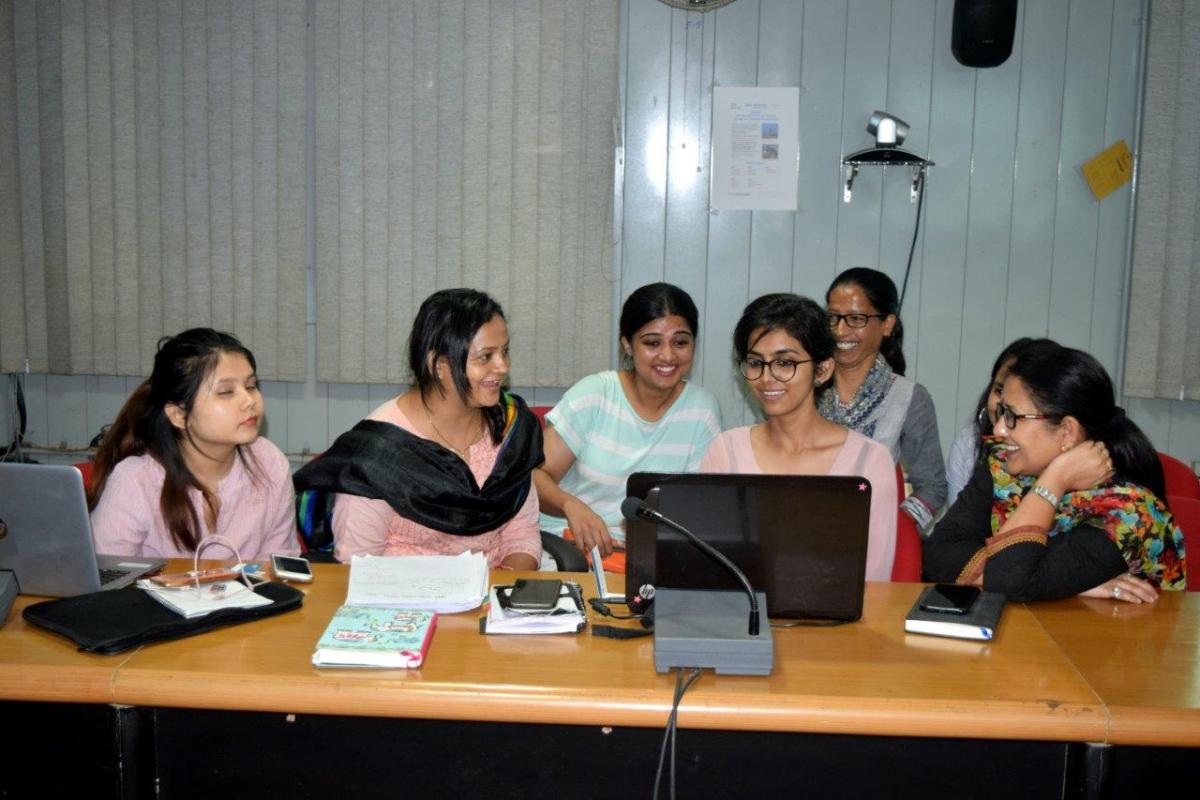Local women's group trained in community nursery management in Uttarakhand, India
On 8 February 2018, IUCN, along with the Uttaranchal Youth and Rural Development Centre (UYRDC), a local NGO, organised a training session on nursery management for the Women’s Self Help Group ‘Jagdamba’ in the Bhadakoti hamlet of Chamoli District, Uttarakhand, India. The training aimed to provide the women with a basic knowledge of nursery techniques and an understanding of the importance of fodder development.

Women's SHG preparing nursery beds in Uttarakhand
Photo: IUCN / Yogeshwar Kumar
Under the Government of India’s National Mission on Himalayan Studies (NMHS), IUCN is implementing the ‘Coping with Uncertainties: Building Community Resilience and Ecosystem Based Adaptation to Climate Change in the Indian Himalayan Region (CwU)’ project in three Himalayan States, one of which is Uttarakhand. In line with the efforts to promote landscape restoration, IUCN is working towards establishing a Community Nursery to raise different fodder species in the Balkila Watershed of Chamoli District. This will help reduce local communities' dependence on forest resources for fuel and fodder, while generating income for the locals.
The training programme was conducted in Bhadakoti by the UYRDC team, with assistance from Nursery Practitioner Mr Ravindra Negi. The training covered key activities involved in nursery establishment, regular upkeep, and maintenance. These included preparation of soil as well as compost; collection, treatment, and sowing of seeds; irrigation; maintenance of saplings; and planting times.
The proposed nursery in Bairagana Village is focused on ‘fodder development’, using species such as Quercus leucotricophora (Banjh oak), Celtis australis (Mediterranean hackberry), Ficus auriculata (Roxburgh fig), Grewia optiva (bhimal), and Bauhinia variegata (butterfly ash). The benefits from these fodder species are significant and were discussed in detail with the local women's group. Mr Yogeshwar Kumar of IUCN emphasised that planting fodder trees in and around croplands would provide the women easy access to high-yield, nutritious fodder for livestock. This would also help reduce the drudgery of collecting fodder from distant forests, while protecting them from degradation.
The 15 women members of Jagdamba have been entrusted with the management of the nursery. In addition to livelihood enhancement of local communities, the saplings from the nursery can even be used by the locals for reforestation activities around their villages. To encourage the farmers to plant fodder trees on their own land, IUCN and UYRDC distributed and planted fodder saplings in Balkila Watershed under the project. The training provided by IUCN and UYRDC to the local women helped them understand the importance of fodder development. It also taught them how to prepare action plans for establishment and maintenance of community nurseries. The Jagdamba members have decided to undertake these activities collectively in the future.
For more information on the project, please click here.



